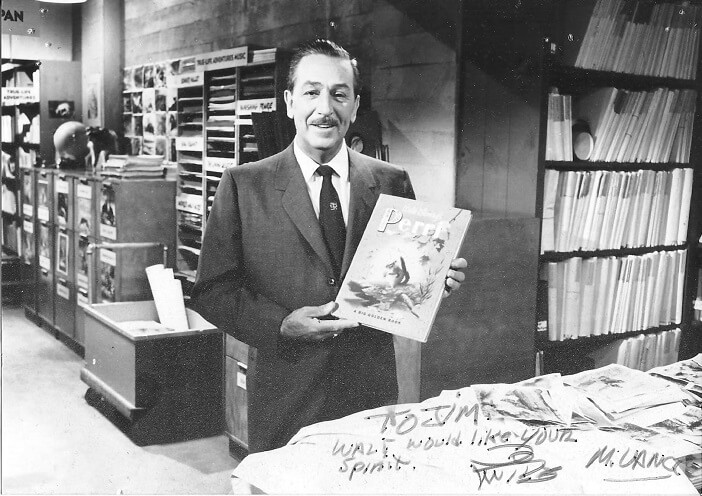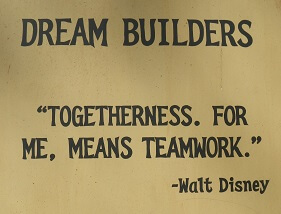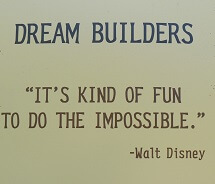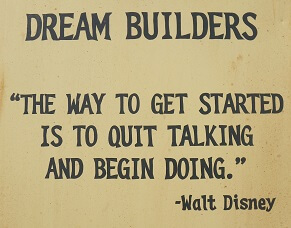When I was a kid growing up in SoCal near Disneyland in the 1960s, anything called ‘Mickey Mouse’ was regarded as cheap, but nowadays the Mickey Mouse brand is considered anything but cheap as a leader in many ways.
This year’s ACC-RAC conference and venue in Orlando near Disney World was aptly appropriate for the conference theme of “Aiming for Effective Change: Leadership in Chiropractic Education, Research, and Clinical Practice.”
I can think of no one better to show this than Mickey Mouse.
As Dr. Reed Phillips mentioned in the panel discussion at the plenary session, “Mickey Mouse is my favorite leader because he’s known worldwide and always has a smile on his face.” Indeed, the same can be said of Dr. Reed, our leader on the DVA’s Chiropractic Commission that was “designed to fail” but instead became a huge accomplishment for our profession.
I’ve always considered the ACC-RAC conference to be the leading assembly that brings together the leaders, academicians, and researchers in our profession from around the world. This year’s conference attracted more presenters and attendees than ever before and may soon merge with the WFC or NCLC to attract even more. If you want to enjoy the most interesting seminar of your life, I urge you to attend next year’s conference.
This year’s guest speaker at the plenary session was author Jim Hunter who also brought many smiles to our faces. Hunter is author of two best selling books and recently the subject of the SUCCESS Magazine article: “How to Become a Servant Leader.”
The son of a hard-nose auto worker, Mr. Hunter grew up in Detroit and admits he stole all his knowledge from others. In his distinctly urban vernacular, he spoke of Detroit’s present problem as “leadership from the neck down.” He defined leadership as the skill to create action and excellence by capturing the heart of your followers, citing Green Bay Packer coach Vince Lombardy who said about his players, “Once I have their hearts, their bodies will follow.”
According to Mr. Hunter:
“Leadership is influence—the mark we leave on other people and the mark we leave on the organizations we involve ourselves with. We all leave a mark. The real question is: Will people be glad you were there?”
As chiropractors, certainly we leave a pretty good mark on most people considering our high patient satisfaction rates.
On the other hand, considering the mountain of bureaucracy we face now with issues such as HIPPA, electronic health records, Obamacare, ICD-10, PQRS, CMS, TRICARE, DVA, and HMOs, the question is how satisfying is the mark of managed care for chiropractors? In one word, ‘ugh.’
Indeed, if you can lead your office through this new maze in healthcare, then you’ve accomplished a lot. I pity the new practitioner focused on clinical techniques but who remains clueless about this new jungle of issues, similar to the cook who doesn’t know how to run his restaurant.
Being a Servant Leader
The timing for this leadership conference was excellent as well as providential being staged near Disney World. The plenary panel discussion was just as entertaining with Gerry Clum, Wright Lassiter, Reed Phillips and Lou Sportelli. Each spoke of examples of leadership in their careers.
Perhaps the most eloquent story of ‘servant leadership’ came from Gerry Clum, who spoke of his ascent to the presidencies of Life-West and the WFC despite his own misgivings. Gerry mentioned that his mentor, Sid Williams, appointed him to head Life-West as a relatively young man with self-doubt. Dr. Williams empowered him with one short statement, “You can do this,” and obviously that he did. Gerry then challenged the audience to encourage someone in the same regard.
He also spoke of another ‘servant leadership’ encounter with Lou Sportelli at a WFC conference back when they belonged to different chiro-political camps. Apparently Gerry had contracted food poisoning the night before and when he didn’t show up for a meeting, Lou phoned him and said, “It’s not like you to be late.” Lou then went to Gerry’s room bringing him soup and giving him an adjustment, nursing him back to health the rest of the conference.
Despite the fact that Gerry had his own friends at the meeting, none of them called or came to help. That Lou helped his political rival spoke volumes to Gerry about being a ‘servant leader’.
This moment was palatable when Lou responded in a self-effacing manner, “This is embarrassing. I just wanted to make sure he wasn’t sleeping in.”
Dr. Sportelli also gave a few lessons in leadership: 1) find a mentor, 2) be a mentor, and 3) never eat alone. He also mentioned one of his mentors, Charles Tremendous Jones, emphasized that “you are the same person today as you’ll be in five years except for two things: the people you meet and the books you read.” In fact, Lou is well known to send books to folks who need advice, myself included.
Jim Hunter summarized the panel discussion by emphasizing leaders have substance rather than merely style. It’s not an innate personality you’re born with, he said, but a leadership quality and moral maturity you develop. Leaders are humbled by serving people and well-intentioned to do the right thing.
As DCs we also might throw into this mix a few qualities that only chiropractors experience as servants in the American healthcare delivery system. Most DCs I know also have a thick-skin, a strong backbone, and true grit that enable them to jump the medical hurdles and overcome the slander and discrimination we constantly face to serve for the sake of serving.
Most DCs I’ve met have also have had a first-hand epiphany as a patient themselves who only responded to chiropractic care. As practitioners, we also experience the unique quality of helping folks get well without drugs, shots, or surgery after many have previously experienced these medical mistreatments. Indeed, no one can tell us chiropractic care doesn’t work when we know damn well it works better in most cases than any drug, shot, or surgery—that is the substance of our conviction.
The Maverick Mouseketeer
While listening to Mr. Hunter and the panel of doctors relate their personal leadership experiences, I wondered where in his formula does the iconoclastic leader fit. Indeed, if anyone was an unusual leader, it was Walt Disney.
Since the theme was “Aiming for Effective Change: Leadership in Chiropractic Education, Research, and Clinical Practice,” any change to the status quo in our associations, colleges, science, and in practice is hard considering the entrenched mindset to ‘fit in’ and not make waves.
Regulations now dominate our practices and colleges, and innovation seems outside this often uncomfortable rut of rules. Indeed, the ‘group think’ mindset seems to dominate and makes it difficult to think outside this rut when conformity is of the essence, not individualism.
So I asked Jim Hunter about this dilemma and here’s what he had to say:
“I know many servant leaders who are mavericks and think way out of the box – in fact, I believe it is an important quality in leadership because servant leaders are always “Green & Growing” – continuously improving – and we can’t improve unless we change. Consequently, great leaders are always looking for ways to stretch, grow and improve themselves and processes.”

In Search of Excellence by Tom Peters,
The Seven Habits of Highly Creative People by Stephen Covey,
Total Quality Control by Armand V. Feigenbaum,
The E-Myth by Michael Gerber,
Influencing with Integrity by Genie Z. Laborde
First Things First by Stephen Covey
Lions Don’t Need to Roar by DA Benton
In the late 1980 and early 1990s, I also attended Guy Riekeman’s Quest seminars on personal development. There I heard many sages similar to Jim Hunter, serendipitously including Mr. Mike Vance, the right-hand man to Walt Disney, who presented on two occasions how to “Disneyize” your company.
At the Washington DC meeting, being an early riser, I wandered to the seminar room around 6 AM only to find Mr. Vance there already setting up. So, for the next three hours, we spoke of many issues and he was more than patient as I picked his brain (no, not me). These are the extemporaneous moments I find most enjoyable at any seminar I attend; as Dr. Sportelli said, “never eat alone.”

“Leadership is the ability to establish standards and manage a creative climate where people are self-motivated toward the mastery of long term constructive goals, in a participatory environment of mutual respect, compatible with personal values.”

Mr. Vance challenged the attendees that day to create their own paradigm in life—to write, invent, or compose something that is unique. I daresay his challenge motivated me to begin my writing career that led to the publication of my practice management textbook, The Path to Mastery In Chiropractic: Seeking excellence in practice.
It’s amazing what a little “pollination” by a mentor can do at the right time to someone just as Drs. Clum and Sportelli mentioned during their panel discussion. When Jerry McAndrews was still active in the ACA as its Lincolnesque spokesman, as a novice I began sending him my articles and as a servant leader he generously gave his editorial advice despite his heavy schedule just as Lou Sportelli often does nowadays (mainly to keep me out of jail, methinks).
Leadership always includes a vision. Mike Vance retold a story of a mourner at Walt’s funeral in 1966 who said it was a shame Walt didn’t live to see the fruit of his labor and imagination since he died before Disney World had opened in 1971.
Mike smiled and replied, “But Walt did see this over twenty years ago.”
You can still see Walt’s creative leadership throughout Disney World with the uniqueness only his brand of amusement parks offer, ranging not only from the thrill of the imaginative movie-based theme rides, but also by the beautiful landscapes everywhere and the educational rides such as those at Epcot.

As my wife and I toured Disney’s Animal Kingdom, I noticed Walt’s values were also evident on epigrams posted on the barriers around new construction. Making his values evident to even the unassuming park guests made me better appreciate the
creative leadership of his long term goals for his special World.
Leaders of Tomorrow
Obviously the need for creative leadership is paramount if our profession is not merely to survive, but to succeed in laying claim to our role as the POE as PSPs for SRDs as I mentioned in my article, Climbing the Ladder of Opportunity.
If this conference theme, “Aiming for Effective Change: Leadership in Chiropractic Education, Research, and Clinical Practice,” is to become a practical reality in our profession, we need to do more than just talk about it and “begin doing.”

I would hate to think this theme is just rhetoric that has fallen on deaf ears.
But I think developing a Leadership and Communication program will improve our situation from the inside-out.
When do we become proactive rather than inactive on this issue? Can our present academic and political leaders even think out of the box or are they stuck in an uncomfortable rut worrying about CCE regulations or recruiting new students?
When I spoke to the Leadership Club at Life U., these energetic students responded enthusiastically to the information on the history of the medical war and the current poli-sci that I presented. But one asked me, “Why don’t they teach us this?” Although they knew about DD, BJ, and Big $id whose stone busts grace a courtyard on campus, they were clueless about the Medical Mussolini, the Wilk v. AMA antitrust trial, AHCPR, or the current bureaucratic issues we all face.

This seems to be our conundrum: if we want to Aim for Effective Change, how is this to occur if we don’t make plans to accomplish it? Indeed, certainly creative leadership and servant leadership are more difficult to implement than merely hearing speeches.
Will we see colleges begin leadership, communications, and public speaking classes to develop our spokesmen/women of tomorrow?
Will our associations make room for the mavericks who think outside the ‘group think’ status quo?
Will our national identity become the POE as PSPs for SRDs or will we continue to struggle with our identity and image?
Although certainly entertaining, this 2014 ACC-RAC conference was clearly a challenge to each attendee, each college, and to each of our national associations to create a new paradigm for chiropractic by “Aiming for Effective Change in our Leadership.”
By this time next year can we say this Disney mindset has led to anything important in “Chiropractic Education, Research, and Clinical Practice”?